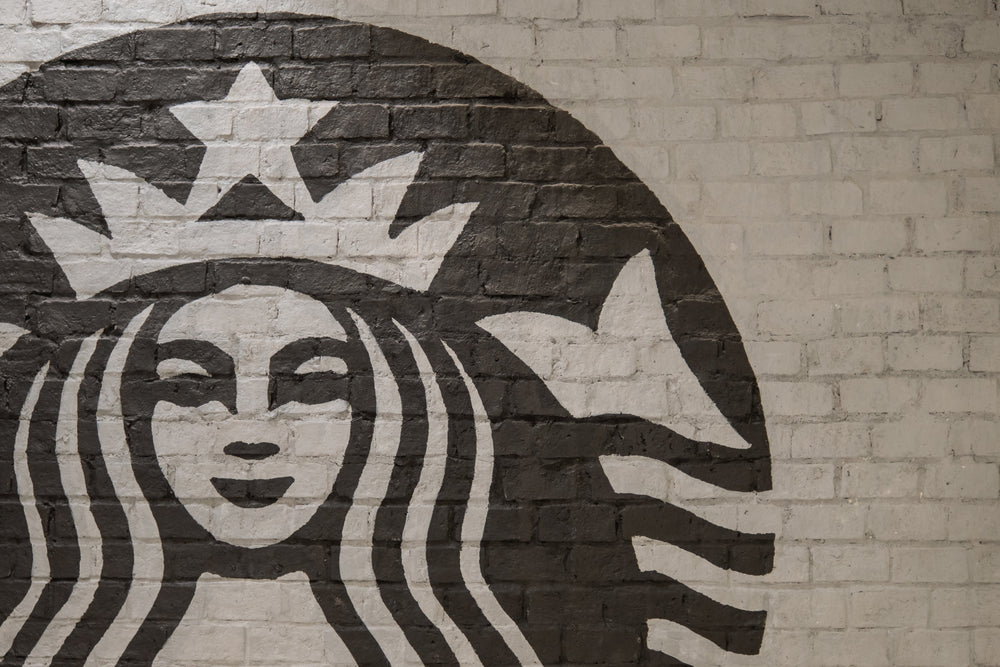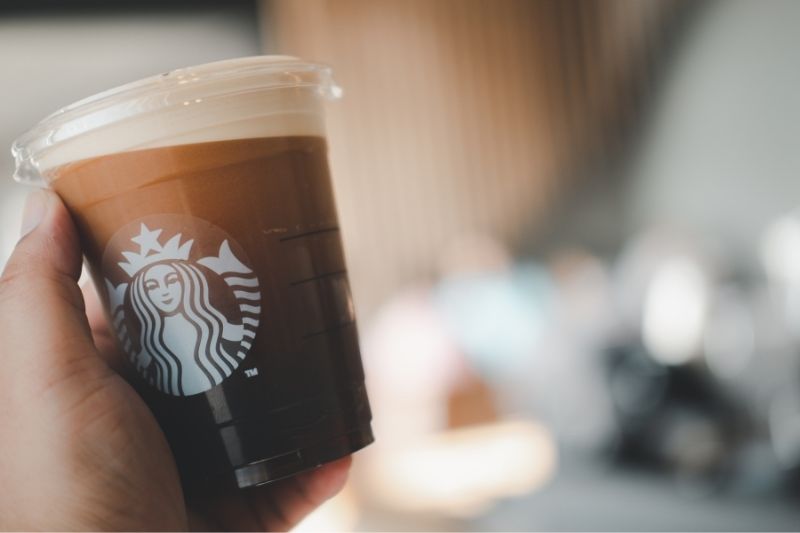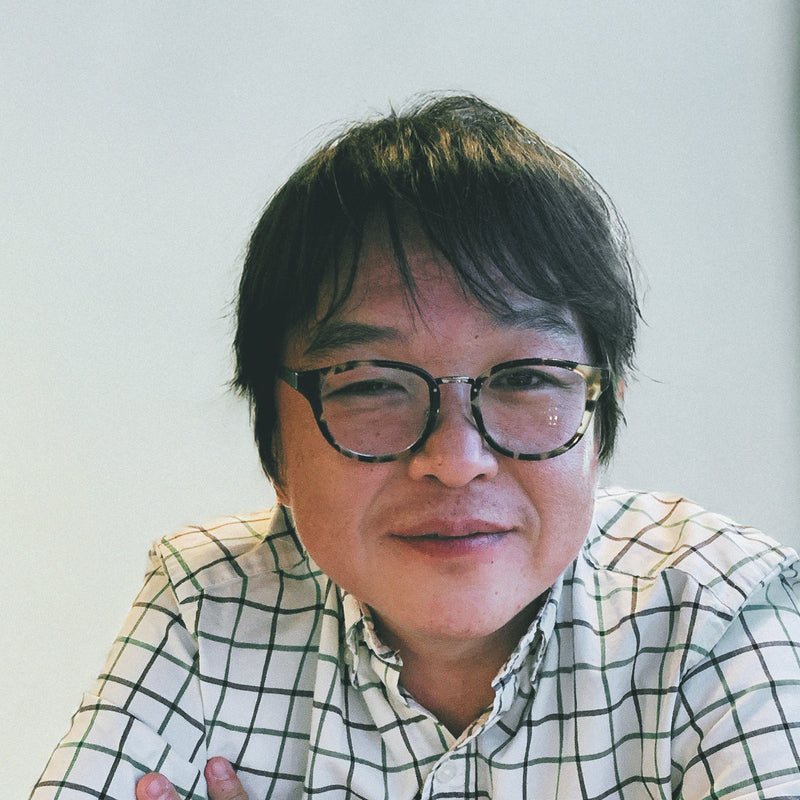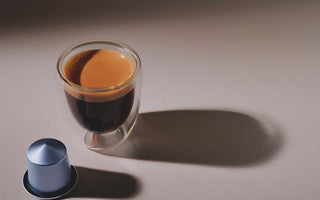- The three most popular Regional Landmark Starbucks Store in Japan
- Highlights of the other Regional Landmark Starbucks Store
- Shinjuku Gyoen Store
- Shinshu Zenkoji Nakamise-dori Store
- Ise Naiku-mae Store
- Okinawa Motobucho Store
- Mojiko Station Store
- Kamakura Onarimachi Store
- Toyama Kansui Park Store
- Awaji Service Area Down Lane Store
- Fukuoka Ohori Park store
- Futakotamagawa Park Store
- Izumo Taisha (Izumo Grand Shrine) Store
- Shamine Tottori Store
- Hirosaki Koen-Mae Store (Hirosaki Park Front Store
- Itsukushima Omotesando Store
- Kobe Meriken Park Store
- Kyoto Uji Byodo-In Omotesando Store
- Yamaguchi City Central Park Store
- Nara Konoike Sports Park
- Kushiro Tsurumibashi (Tsurumi Bridge) Store
- Kawagoe Kanetsuki Dori (Kanetsuki street) Store
- Hamamatsujo Koen (Hamamatsu Castle Park) Store
- Takefu Chuo Koen (Takefu Central Park) Store
- Dogo Onsen Ekisya (Dogo Hot Springs Station) Store
- Osakajo Koen Morinomiya (Osaka Castle Park Morinomiya) Store
- Kobe Kitano Ijinkan Store
- A Quick Look at all 28 Regional Landmark Stores
- Why is Starbucks choosing renovated traditional buildings instead of more standard and modern locations?
- Are there any objections to turning traditional local buildings into Starbucks cafes?
The first Starbucks store in Japan was opened in the Ginza district of Tokyo in 1996. Twenty-five years from then, the number of Starbucks stores in Japan stands at an astounding number - as of March 2021, there are 1637 Starbucks stores across Japan! Although the sheer increase in this number is impressive in itself, the true representation of their success in Japan is measured by quality rather than quantity. Not only the quality of the coffee, but also the quality of the 'space' where the coffee is enjoyed, and the quality of the community spirit at the core of the design, atmosphere, and customer service that can be found in these stores.

Starbucks has placed great emphasis on building a personal and close relationship with its customers from the very beginning. According to Howard Schultz, CEO of Starbucks, his aim with Starbucks has been to create a space that not only serves great coffee, but to be one that acts as a comfortable space where people can have meaningful interaction with their friends and families, and a place where deep human connections are made. This concept – "A Third place, beyond home and office" has been the secret behind the unparalleled success of Starbucks.
The building of this long-lasting and meaningful relationship with customers has to start from within the company, which means that the company's staff have a close relationship with each other and their team leaders that extend beyond just business and work. Each staff has frequent one-on-one conversations with the store manager where they discuss their motivation, passion, and vision of what they want to do as an individual. These opinions and thoughts are heard and taken into serious consideration so that the dreams of each staff can be a part of the dream of the company as a whole. This community and family spirit within the company translates into a strong feeling of community with the customers. One ongoing effort by Starbucks Japan can be said to be the epitome of this passion for community building, and that is - “Starbucks Japan Regional Landmark Stores.”

At the moment, there are 28 Regional Landmark Stores across Japan. Starbucks Japan Regional Landmark stores are Starbucks stores in Japan that are built at locations that are representative of the region’s unique architecture, history, and traditions. The interior decoration, the architecture, and the design planning of these stores reflect the craftsmanship, art, culture, and history of that region. The local customers can come to these stores and feel a deep connection to their roots and heritage, strengthening the ‘community spirit’ among them, whereas the customers coming from outside the region can learn and experience the specialties of that region. In this article, we will look at these stores and zoom in on some of the most noteworthy among these stores. If you are in Japan, do not miss out on a unique Starbucks café experience at one of these stores, as each of them offers something exclusive to that store.

The three most popular Regional Landmark Starbucks Store in Japan
Although each of the regional landmark stores offers features and atmosphere that is unique to the individual store, there are three that are the most remarkable among the 28 of them, and we are going to take an in-depth look at these stores.
Kyoto Nineizaka Yasaka Chaya Store
If you had the time to go to only one Japanese regional trademark Starbucks store, this one has to be it. But be aware of the location since this café building blends in perfectly with the surrounding townscape. Unless you knew beforehand that it is a Starbucks café, you would walk past it thinking it is another Machiya (traditional townhouse) on this street. Nineizaka Street, on which this building stands, is one of the most popular tourist attractions in Kyoto. It is a pedestrian street that leads down to the famous Kiyomizu-Dera (Kiyomizu Temple, a World Heritage Site). The street is paved with stones and lined on both sides by traditional Kyoto-style houses and shops that have been preserved in their original design and architecture.
The building for this Starbucks has been meticulously chosen, and from planning to execution, it has taken ten long years until it was finally opened on June 30, 2017. This building is a Machiya (traditional Japanese townhouse), and it is more than 100 years old. It is a true representation of Japan's culture, history, and heritage from the Taisho era (1912 -1926). The exterior of the building has been left unchanged, while the interiors have been restored, keeping the original structures and essence intact as much as possible.
It was the first Starbucks in the world to have a Noren (traditional curtain made of long and narrow fabric with slits in the middle). The only Starbucks café in the world with a Zashiki (a traditional guest room with Tatami flooring). In this room, guests can take off their shoes and sit comfortably on Zabuton (cushions) laid out beautifully on Tatami mat flooring instead of sitting at tables and chairs. In addition, on the walls are Japanese-style decorations such as hanging paper scrolls. This Zashiki room is associated with traditional Japanese tea ceremonies, but even to imagine that you can have a Starbucks Frappuccino or coffee sitting in a Zashiki room like this is utterly mind-blowing.
On the ground floor, the bar counter for ordering is located at the back of the house, and the narrow corridor leading up to it is illuminated in a way to give you a feeling of walking through a ‘Tori-Niwa’ (traditional passageway leading from front of the house to the back of the house). The ground floor also has a ‘Tsubo-Niwa', a small inner courtyard garden, a feature unique to traditional Japanese houses.
Many aspects of the interior have been left unchanged, such as the remains of a beehive hanging from the ceiling and an exposed wooden beam on the ceiling. Even though it has many features that make it very attractive to tourists, thinking of this place as a mere 'tourist attraction' would be a terrible misconception. On the contrary, it is the perfect 'third place' where the locals can feel connected to each other and their heritage, culture, and traditions, and where tourists can learn and have a first experience of the local customs and culture.
Address: 349 Banchi, Masuya-cho, Shimogawara Higashi-iru, Kodaiji Minamimon-dori, Higashiyama-ku, Kyoto
Kagoshima Sengan-en Store
Kagoshima is located at the southwestern tip of Japan, and it is a seaside city that boasts of spectacular natural beauty and rich history, and these two aspects of Kagoshima can be enjoyed to the fullest through an exceptional Starbucks store located in Sengan-en of Kagoshima. To fully appreciate the importance of this Starbucks store, a little introduction to Sengan-en and Shimazu clan is necessary as they are both interweaved into the essence of Kagoshima. Shimazu clan is Japan's oldest surviving warrior clan. They have ruled over a vast region of Kagoshima for more than 700 years, from the Kamakura era (1185-1333) to the end of the Edo era (1603-1868). However, even after the end of their rule as feudal lords, this family has continued to play important roles in industrialization, modernization, and the economy of the area, and this legacy survives even to this date.
Now, about Sengan-en. One of the most famous spots in Kagoshima is ‘Sengan-en', the stately residence of the Shimazu clan that consists of a villa and an expansive Japanese garden surrounding the villa. The garden, built by a member of the Shimazu clan in 1658, has been designated as a 'Place of Scenic Beauty by the Japanese government. Near this area, in another historically important building is the regional landmark Starbucks store that features motifs and themes of the Shimazu clan and Sengan-en garden.
The two-storied white building of this store has a unique East-meets-West vibe, and it has belonged to a member of the Shimazu clan and was used during the beginning of the 19th century by the clan as a mining office. This building has been designated 'Tangible Cultural Property by the Japanese government due to its cultural and historical significance. At the front entrance, you will see the ‘Kamon’ (family emblem) of the Shimazu clan. In addition, other artisanal crafts of Kagoshima, such as 'Satsuma Kiriko Glass cut', have been featured in the interior design of the café. The ideas and planning behind this store have seen a lot of contribution from the Starbucks staff members from Kagoshima, and they aimed for a ‘third place’ that the local people can be proud of, and one that will act to tell the story of Kagoshima’s history and culture to people coming to Kagoshima.
From the second-floor seating of this café, you can enjoy a breathtaking view of Kagoshima Bay and the Sakurajima active volcano.
Address: 9688-1 Yoshinocho, Kagoshima, 892-0871, Japan
Dazaifu Tenmangu Omotesando Store
Dazaifu Tenmangu Omotesando is a famous street in Fukuoka prefecture lined with various souvenir shops and cafes. This street leads to the Dazaifu Tenmangu Shrine, one of the most important Shinto shrines in Japan. On this street, you will find a regional landmark café with a stunning architectural design. The design is based on a unique traditional Japanese woodcraft called 'Kigumi' practiced since the 7th century. It uses interlocking wooden joints that are bonded together without using adhesives, screws, or nails. From the entrance to the inside of the café, this unique woodwork made from multiple layers of wooden planks and frames creates a warm atmosphere where you can enjoy your coffee and conversation in a relaxed mood.

The concept of this store is 'Fusing modernity and traditions using naturally sourced materials, and has been achieved by the genius work of Kengo Kuma, one of the most critically acclaimed architects in Japan.
The backyard of the store, which is visible through transparent glass walls, has many plum trees, which are important symbols of the Tenmangu shrine.
Address: 3 Chome-2-43 Saifu, Dazaifu, Fukuoka 818-0117, Japan
Highlights of the other Regional Landmark Starbucks Store
-
Shinjuku Gyoen Store
 Image from Starbucks Japan
Image from Starbucks Japan-
It is located within Shinjuku Gyoen, which is among the largest and the most popular nature parks of Tokyo.
-
The transparent glass walls allow you to enjoy the surrounding nature and the 'four seasons of Japan. The view through the vast, transparent walls shows the changes in the park scenery according to the seasonal transitions.
 Image from Starbucks Japan
Image from Starbucks Japan-
The interior reflects sustainable use of materials, especially domestic timber and wood, and recycled materials. Japanese wood has been used to build walls, roofs, and furniture such as the bar counter, which adds a natural warmth to space and reminds us of our relationship with nature.
-
The centrally placed 'Community Table' functions to bring people together and have a significant symbolic value. It has been made by traditional craftsmen using Sugi and Cypress wood from Tokyo.
Address: Shinjuku Gyoen 11 Naitomachi Shinjuku-ku, Tokyo, 160-0014, Japan
-
Shinshu Zenkoji Nakamise-dori Store
 Image from Starbucks Japan
Image from Starbucks Japan- It is located on Nakamise-Dori (Nakamise-street), an iconic street leading to the significant temple representative of Nagano prefecture called Zenkoji Temple.
-
It is a two-storied building featuring traditional Japanese wooden architecture with the Japanese design concept of "Movement and Stillness, Light and Shadow," which is realized by incorporating features unique to Japanese wooden buildings such as Shoji (paper sliding doors) and Tenmado (Skylights).

-
The bar counter area has been crafted from 5 different types of local wood.
-
The staircase has been decorated with 4m long hand-dyed tapestry art featuring coffee plants and the beautiful mountains of Nagano prefecture.
-
The second floor has a very traditional Japanese feel. The seating area is made as a raised “tatami” floor (mat flooring made with natural plant materials such as hemp and rush grass) with a sunken ‘Kotatsu' table (traditional Japanese table with heating). On the ceiling, a wooden beam from old times has been left to keep the history of the place alive.
Address: Motoyoshicho-483, Nagano, 380-0851, Japan
- It is located in Oharai-Machi, a historical town near the 'Jingu Shrine’ of Ise, a famous place with a history of more than 2000 years.
-
It is built following the design of the buildings along the historical street lined with cobblestones, Japanese Edo-period style architecture, and 'Onigawara’ Japanese style roof tiles.
-
The café is two-storied, and the upper floor provides a spacious and peaceful seating area featuring a 'Community Table' made from Mie prefecture's locally grown wood and a large window through which a beautiful scenery of the town can be enjoyed.
Address: 37-4 Ujiimazaikecho Nakakashuraku, Ise, Mie, 516-0024, Japan
<
-
Okinawa Motobucho Store

-
This store is famous as the “Japanese Starbucks with a fantastic sea view." This location has abundant natural beauty, and views of the mountains and the sea can be enjoyed from this Starbucks store.
-
The design concept is “Coffee Yuntaka." "Yutaka" in the Okinawa dialect means 'joyful chatting,' and the double-storied café space has been created to promote joyful and meaningful conversation among the guests, whether it be local people or tourists.
-
The community table on the ground floor has been made to be a "Jimoto Table” (Local Table) specially designed and built by a local craftsman using native Okinawa pine wood.
Address: 1421-4 Yanagawa, Motobu, Kunigami District, Okinawa 905-0205, Japan
-
The café is located inside the restored Mojiko railway station building, originally built in 1914 (the third year of the Taisho era).
-
The concept behind the design is "Storyteller," aiming to tell the history of the area and the industrial development that happened during the Taisho period.
-
It features interior decoration items such as iron plates from trains, iron frames and bars from the Kita-Kyushu region's railways, and a central "Jimoto Table," crafted from locally sourced wood.
Address: 1 Chome-5-31 Nishikaigan, Moji Ward, Kitakyushu, Fukuoka 801-0841, Japan
-
This store is located at a prime location in the Kamakura region. Kamakura has served as the center of political activities during medieval Japan, making it one of the most historically rich areas in Japan.
-
The café building is the renovated former residence of a famous Japanese manga artist Ryuichi Yokoyama (1909-2001), whose artwork is displayed as part of the interior decoration.
-
The Wisteria vines and cherry trees in the outer yard, along with a swimming pool, have been preserved from the time when the artist was living in the house. The purple wisteria shade and the cherry blossoms make it a wonderful experience to sit at the outside terrace seating during the late spring and early summer months.
Address: 15-11 Onarimachi, Kamakura, Kanagawa 248-0012, Japan
- Toyama Kansui Park is a large park built around a canal with lots of nature and beautiful views. Sitting at this store, you can enjoy the 'four seasons of Japan, listen to chirping birds, and watch dog-walkers and enjoy a family-friendly environment.
-
The store design features an interior design with terrace space, wooden furniture, and large glass walls, giving you a feeling of being in an open area surrounded by the calming natural beauty of the park. From any seat at the store, you can see the famous 'Tenmon-Kyo Bridge,' which symbolizes this park. Furthermore, the light-up around the park enables you to experience a different kind of beauty and a romantic atmosphere at night.
Address: Kansui Park, 5 Toyama Fugan Canal, Minatoirifunecho, Toyama-shi, Toyama, 930-0805, Japan

-
Awaji Service Area Down Lane Store
-
Awaji Service Area is a highway rest stop area featuring a magnificent view of the Akashi-Kaikyo Bridge, Osaka Bay, Akashi Strait, a large colorful Ferris wheel, and a large observation deck.
-
The store has transparent glass walls so you can sit inside and enjoy the view or get a take-away and enjoy the coffee while walking around or sitting in the scenic area.
Address: Awaji Service Area Down Lane 2568 Iwaya, Awaji, Hyogo, 656-2401, Japan
-
This store is located inside a large park popular as a jogging and walking place.
-
The central concept of the store is to be environment-friendly, and it has earned the title of being a 'Green Café.'
-
Even the furniture used in the café is built using environment-friendly materials and methods such as mixing coffee grinds with wood; explaining the eco-friendly building of furniture are writings on boards and plates inside the café, which helps raise environmental awareness.
Address: 1-8 Ohorikoen, Chuo Ward, Fukuoka, 810-0051, Japan

-
Futakotamagawa Park Store
-
Futakotamagawa Park is a large park in Tokyo located on the banks of the Tama River, with abundant greenery, a children’s play area, and two ponds.
-
The store has large glass walls and terrace seating so you can enjoy your coffee being close to the nature in the park.
Address: 1 Chome-16-1 Tamagawa, Setagaya City, Tokyo 158-0094, Japan
-
Izumo Taisha is one of the largest, most important, and oldest shrines in Japan. The store is located within the premises of this shrine.
-
The god represented by this shrine is the god of 'match-making', and the concept behind this store is the match-making or 'wedding' between the traditional Japanese (the shrine) and the West (a brand from the West).
-
The two-storied building has been designed with interior decorations that are a fusion between western and eastern styles.
Address: 841 Taishacho Kizukiminami, Izumo, Shimane 699-0711, Japan

-
Shamine Tottori Store
-
Shamine Tottori is a modern shopping mall located in Tottori prefecture.
-
This Starbucks store has indoor and outdoor seating areas, and the outdoor seating area features excellent shading with natural plants and contemporary wooden furniture.
-
It is a perfect place for relaxing and enjoying a coffee break after shopping at the Tottori Shimane. Not only does it offer a drive-through option, but it is also very close to the central train station, so it is very conveniently located.
Address: 112-13 Higashihonjicho, Tottori, 680-0835, Japan
-
Hirosaki Park is part of the famous Hirosaki Castle, a place known for its cultural heritage and natural beauty, especially for cherry blossoms during spring and autumn leaves during the fall season.
-
The store is built within the former residence of an army commander. The wooden building, which was built in 1917, has a unique architectural design.
-
The bar counter is in the room which used to serve as the 'conference room' during the Taisho period and has a uniquely romantic atmosphere.
Address: 1-1 Kamishiroganecho, Hirosaki, Aomori, 036-8207, Japan
- Itsukushima Omotesando is one of the most popular tourist places in Miyajima. It is a shopping arcade street with many shops, bars, restaurants, and cafes.
- The design concept behind this store is "Passion Brewery." It is located within the same building as Miyajima Brewery, a local beer brewing company that contributes to the local economy. Therefore, Starbucks' passion for coffee brewing and the passion for beer brewing by Miyajima Beer Co. Ltd. are harmoniously represented in architecture and interior designing.
- Through the glass-enclosed café walls and from the second-floor balcony seats, you can enjoy a magnificent view of the Seto Inland Sea and the large 'Torii' gate of the Itsukushima Shrine.
Address: 459-2 Miyajimacho, Hatsukaichi, Hiroshima 739-0588, Japan
-
This park is situated at the tip of Kobe Port waterfront and was established in 1887.
-
The store has been made with large glass walls and a spacious balcony seating area with comfortable sofa-style chairs. It has been created to give the feeling of having a relaxed time on a cruise ship. From here, you can enjoy a spectacular view of the Kobe port and some stunning architectures in the area, such as the iconic red Kobe Port Tower, Kobe Maritime Museum, and the cityscape. At night when these structures are lit up, it is even more beautiful.
-
The interior has been designed with a strong focus on the environment and sustainability. For example, the front panel of the bar counter has been made using domestically grown wood, and recycled coffee cups and coffee grinds have been incorporated into the interior designing structures.
Address: 2-4 Hatobacho, Chuo Ward, Kobe, Hyogo 650-0042, Japan

-
Kyoto Uji Byodo-In Omotesando Store

-
Uji Byodo-in is a famous Buddhist temple and a World Heritage Site.
-
The store has been designed with traditional Japanese elements to keep in accordance with the quiet and calm Zen atmosphere.
-
From the café, guests cab enjoy the poetic seasonal transitions such as the colorful autumn leaves.
Address: Renge-21-18 Uji, Kyoto 611-0021, Japan

-
Yamaguchi City Central Park Store
 Image from Starbucks Japan
Image from Starbucks Japan-
The store located inside a large central park is designed so that the inside of the café is in complete harmony with the nature on the outside surrounding the café.
-
The furniture used in this store is of low height so that they do not obstruct the park's natural scenery.
-
The front panel of the bar counter has been made using beech wood grown in Yamaguchi prefecture.
-
The large terrace seating has a very open and airy atmosphere, allowing the guests to enjoy a relaxed time close to nature.
Address: 7-10 Nakazonocho, Yamaguchi, 753-0075, Japan
-
The park houses a beautiful lake called ‘Kono-ike', which is known to have been the source of irrigation during the Muromachi period (1336 – 1573). Although the lake is not used for irrigation anymore, it serves as a tranquil natural beauty where the local people come to exercise and rejuvenate.
-
The store's interiors have been designed with rich brown wood, which exudes organic warmth and harmony with the surrounding nature.
-
The outer terrace of the café has a comfortable seating area under a large roof so guests can take long breaks between their running and walking routines around the park.
-
The glass walls allow a lot of natural sunshine to come in, providing a bright, spacious atmosphere inside the café and allowing unobstructed views of the surrounding greenery.
Address: 4 Chome-2 Horensahoyama, Nara, 630-8108, Japan
-
It is a two-storied building with a tranquil view of the Tsurumi Bridge across Kushiro River in Hokkaido.
-
This Starbucks store is the easternmost Starbucks café in Japan and is geographically the closest to Seattle. The interior decoration has been designed to reflect this connection to Seattle; for example, the bright lamps hung on the staircase will remind you of a rainy day in Seattle.
-
The bar counter's walls and front panels have been made using local Karamatsu (Japanese larch wood grown in Kushiro region) wood.
-
The terrace seating on the second floor has a fantastic view of the bridge and the river.
Address: 1 Chome-1-1 Showachuo, Kushiro, Hokkaido 084-0910, Japan
-
The town of Kawagoe is also known as “Koedo," which means "Little Edo." This was an important town that has acted as a supply center for Edo (the capital) during the Edo period (1603 -1867). The architecture and the surroundings of this town make one feel like they have time-traveled back to the Edo period.
-
The store building has been designed in accordance with the cityscape of this town, with a traditional Japanese Edo-style façade. There is a courtyard at the center of the store and a back terrace with a Japanese-style garden, which is in harmony with the traditions of the town.
-
One of the most iconic features of ‘The little Edo’ is ‘Toki-no-Kane’(The bell of time), and it is a bell tower that rings four times a day to notify the inhabitants of the time. The sound of this bell can be heard from inside the café.
-
A local craft called 'Kawagoe-Tozan', which is a special fabric that has been made in the area since the Edo period, is used in the decoration of the benches.
-
A special kind of plaster from the Edo period has been incorporated into the front of the bar counter.
Address: 15-18 Saiwaichō, Kawagoe-shi, Saitama Prefecture, Japan
-
Hamamatsu Koen is a beautiful park full of nature, a pond, and a traditional Japanese-style wooden bridge over the pond.
-
The café building has been designed to create a space that is a part of the surrounding forestry of the park. This has been done by using an ample amount of wood in the interior design, including the roof. The wood from the trees that were cut to make space for the building has been used in parts of the entrance door and in the artworks displayed within the café.
-
The outdoor seating area is a wooden deck, from where you can enjoy the scenery of the pond, the seasonal transitions, and part of the famous Edo-era Hamamatsu Castle.
-
Textile and wood from the Hamamatsu area have been used in interior designing to pay homage to the local traditions and crafts.
Address: 100-2 Motoshirocho, Naka Ward, Hamamatsu, Shizuoka 430-0946, Japan
-
Take Central Park is a beautiful park in Fukui prefecture of Japan featuring a children’s theme park built under the supervision of the famous Japanese picture book author Satoshi Kako.
-
The store is made with large glass walls and wooden interior and exteriors, creating a harmony with the nature surrounding the store.
-
A local artist has created the original artwork displayed within the café from Fukui, and some of this art has been done on traditional Echizen Washi paper.
-
On the ceiling above the bar counter, interior decoration has been created using Japanese Washi paper manufactured in the area. The shape of this decoration represents the spiral hand movement of pouring a drip coffee, which is one of the most popular coffee brewing methods in Japan.
Address: Takefu Chuo Park 2-7-131 Takase, Echizen, Fukui
-
Dogo Onsen Hot spring is known as Japan's oldest hot spring establishment, and this Starbucks café is located in the train station building of Dogo Onsen.
-
The entire two-storied building of the station has been used exclusively for this Starbucks café. This building has a vibrant history – it was first constructed in 1884 with a Meiji era (1867- 1912) Western-style architecture, then renovated in 1986, keeping the original essence of that era intact.
-
The bar counter on the ground floor has been designed with wooden structures taken from railroads, and through the window, you can see the trains passing by, giving you the feel of a 'train journey'.
-
The second floor has art featuring rail tickets and wood taken from railroad structures as well.
-
The whole building has a unique vintage feel to it.
Address: 1 Chome-10-12 Dogomachi, Matsuyama, Ehime 790-0843, Japan
-
Osaka-jo Koen or Osaka Castle Park is the second-largest park in the city and houses a significant historical site – the Osaka Castle (built-in 1583), surrounded by lush greenery.
-
The walls of the Osaka castle and its tower are made using stone architecture, and the inspiration taken from this stone architecture is evident in the interior design of the café. For example, stones have been used in the leg parts of counter seats, the terrace seating area has furniture shaped like oval stones, and gravel has been used around the outdoor seating area.
-
To make the guests feel close to nature in the park surrounding the café, transparent glass walls have been used, along with a wooden ceiling for the terrace seating that allows natural sunlight and shadows from the tree branches to come through the roof.
-
An artist from Osaka has created the original artwork within the café, and the artwork expresses diversity (one of the core values of Starbucks) through the use of different playful colors.
Address: 3-9 Osakajo, Chuo Ward, Osaka, 540-0002, Japan
-
Kitano Ijinkan (foreign settlement quarter) is a historical tourist attraction spot in Kobe that has a number of buildings that were used as foreign residents during the late Meiji era(1868-1912) and early Taisho era(1912-1926).
-
The building used for this store is an official ‘Tangible Cultural Property’ and is a two-storied Western vintage-style building. Originally owned by an American, it was built in 1907. After being damaged by an earthquake in 1995, the original parts were dismantled and rebuilt in 2001.
-
The store has several rooms, each with its own unique feel, such as lounge, dining room, guest room, etc., which are features of Western-style houses.
Address: 3-1-31 Kitanocho Chuo-ku, Kobe, Hyogo, 650-0002, Japan
A Quick Look at all 28 Regional Landmark Stores
|
Store Name |
Prefecture |
Drive-Through |
Outdoor Seating |
|
Kyoto Nineizaka Yasaka Chaya Store |
Kyoto |
No |
No |
|
Kagoshima Senganen Store |
Kagoshima |
No |
No |
|
Dazaifu Tenmangu Omotesando Store |
Fukuoka |
No |
No |
|
Shinjuku Gyoen Store |
Tokyo |
No |
Yes |
|
Shinshu Zenkoji Nakamise-dori Store |
Nagano |
No |
No |
|
Ise Naiku-mae Store |
Mie |
No |
No |
|
Okinawa Motobucho Store |
Okinawa |
Yes |
Yes |
|
Mojiko Station Store |
Fukuoka |
No |
Yes |
|
Kamakura Onarimachi Store |
Kanagawa |
No |
Yes |
|
Toyama Kansui Park Store |
Toyama |
No |
Yes |
|
Awaji Service Area Down Lane Store |
Hyogo |
No |
Yes |
|
Fukuoka Ohori Park store |
Fukuoka |
No |
Yes |
|
Futakotamagawa Park Store |
Tokyo |
No |
Yes |
|
Izumo Taisha (Izumo Grand Shrine) Store |
Shimane |
No |
No |
|
Shamine Tottori Store |
Tottori |
Yes |
Yes |
|
Hirosaki Koen-Mae Store (Hirosaki Park Front Store) |
Aomori |
No |
Yes |
|
Itsukushima Omotesando Store |
Hiroshima |
No |
Yes |
|
Kobe Meriken Park Store |
Hyogo |
No |
Yes |
|
Kyoto Uji Byodo-In Omotesando Store |
Kyoto |
No |
Yes |
|
Yamaguchi City Central Park Store |
Yamaguchi |
Yes |
Yes |
|
Nara Konoike Sports Park Store |
Nara |
No |
Yes |
|
Kushiro Tsurumibashi (Tsurumi Bridge) Store |
Hokkaido |
Yes |
Yes |
|
Kawagoe Kanetsuki Dori (Kanetsuki street) Store |
Saitama |
No |
Yes |
|
Hamamatsujo Koen (Hamamatsu Castle Park) Store |
Shizuoka |
No |
Yes |
|
Takefu Chuo Koen (Takefu Central Park) Store |
Fukui |
Yes |
Yes |
|
Dogo Onsen Ekisya (Dogo Hot Springs Station) Store |
Ehime |
No |
Yes |
|
Osakajo Koen Morinomiya (Osaka Castle Park Morinomiya) Store |
Osaka |
No |
Yes |
|
Kobe Kitano Ijinkan Store |
Hyogo |
No |
Yes |

Why is Starbucks choosing renovated traditional buildings instead of more standard and modern locations?
Starbucks, in general, is nowadays trying not to make all of their café branches too similar. Instead, they are trying to bring in the unique flavor of the locality into their drinks and food and their interiors by incorporating furniture crafted locally and arts such as paintings created by local artists and designers. This makes sure that every café can have a deep, personal connection with the local people living in that area.


Are there any objections to turning traditional local buildings into Starbucks cafes?
When doing something ambitious like turning old traditional Japanese buildings into Starbucks café, of course there will be varying opinions from the general public. Something to be considered as well as the fact that Starbucks is originally a foreign company. However, the majority opinion on this effort by Starbucks has been positive. There are several good reasons for this.
First of all, maintenance and preservation of traditional Japanese buildings take time, expense, and dedication. Therefore, when a building is converted into a Starbucks café, Starbucks takes full responsibility for maintaining it at its best state. Secondly, when Starbucks uses one of these traditional buildings as their café, they try their best to keep the original atmosphere, concept, and spirit intact during and after the renovation. This means that although the place is renovated to be more guest-friendly, safe, and accessible to everyone, the true essence of the site is never lost.
Get Free Bonus Books

Sign up for free to the Coffee Club to get advice and exclusive articles about how to choose Japanese Coffee, and tips, tricks, and recipes for enjoying Japanese coffee.
About the author
Kei Nishida
Author, CEO Dream of Japan
Certification: PMP, BS in Computer Science
Education: Western Washington University
Kei Nishida is a passionate Japanese tea and coffee connoisseur, writer, and the founder and CEO of Japanese Coffee Co. and Japanese Green Tea Co., both part of Dream of Japan.
His journey began with a mission to introduce the world to the unparalleled quality of Japanese green tea. Through Japanese Green Tea Co., he established the only company that sources premium tea grown in nutrient-rich sugarcane soil—an innovation that led to multiple Global Tea Champion awards.
Building on this success and his passion for Japanese craftsmanship, Kei expanded into the world of coffee, pioneering the launch of Japanese Coffee Co., the first company to bring Sumiyaki charcoal-roasted coffee to a global audience. His dedication to authenticity and quality ensures that this traditional Japanese roasting method, once a well-kept secret, is now enjoyed worldwide.
Beyond tea and coffee, Kei has also introduced Japan’s legendary craftsmanship to the world through Japanese Knife Co., making handmade katana-style knives—crafted by a renowned katana maker—available outside Japan for the first time.
Kei’s journey continues as he seeks out and shares the hidden treasures of Japan, one cup and one blade at a time.
Learn more about Kei






























